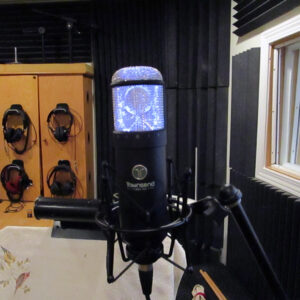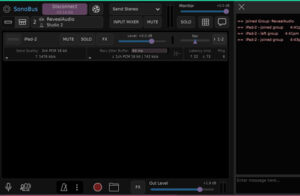
Meet the newest addition to my mic locker – the UAD/Townsend Labs Sphere L22 modeling mic. It looks striking and sexy with its glowing blue color. There are actually two microphone capsules (front and rear) in one housing, and they both are used to create the mic simulation.
In practice for recording vocals, we would record as usual, but to a stereo track. After recording is where the fun begins. We now have the ability to listen to how your voice would sound through various different vintage mics and find out which one works best to help your vocal tone sound great and sit well in the mix.
Universal Audio is one of the premier companies for this kind of technology, and they have provided models of some of the most sought after microphones in the world. You have your choice of large diaphragm Neuman U-87, U-67, U-47, U-49, AKG 414 (4 models), Telefunken ELA M-251, and many others including small diaphragm condenser and dynamic microphones. I have listened to each of these models and have gotten a good idea of what type of voice would benefit from their specific coloration, which makes the selection go quicker.
In addition to the general coloration of the mic, I can control the low end mud by working with the proximity knob (which simulates the way the mic responds to how physically close you are) as well as a bass roll-off. And that’s not all!
The mic can be used as a normal vocal mic with a cardiod (heart shaped) pickup pattern, but the capsule can be rotated to change the pattern to bi-directional (great for stereo guitar or live duets), omnidirectional (to record the entire room sound), as well as in-between patterns which might give a different tone.
In short, it’s crazy versatile, sounds great, and will be a vital part of my studio sound going forward. It’s the mic for the 21st century.

